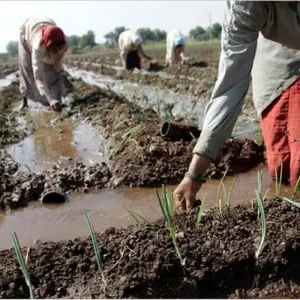Jyotsna Pattabiraman is a Stanford graduate who runs a food start-up in Bangalore named Growfit which specializes in innovative millet and organic product based dishes. Her start-up is a big hit among the health conscious crowd in particular in Bangalore as it suits there palate. With the lockdown that has been announced to prevent the amoeba-like spread of Corona, Jyotsna is at her wit’s end to run the show. It could be a double whammy for her when lockup is lifted as the supply line would dwindle and if she raises the price, the clientele may shift away.

Kanwardeep Pannu is a honey grower based out of Ludhiana, for whom this is the season when he has to move his honey boxes to foothills of Shivalik starting from Gurdaspur to Jammu. However, the locals are not allowing him to put his bee boxes under the perceived fear that these boxes may be carriers of coronavirus. This is the time when commonly grown honey is harvested and meets the demand of the vast population of the country. With such a situation honey growers like him have the morbid fear and an eerie feeling of an uncertain future.
All over the country, with the lockdown at the peak harvesting season all the players associated with agriculture are staring at an extended period of uncertainty and a morbid fear of falling into debt-trap on account of the inability to repay the loan taken for agricultural operations.
The crops of Rabi season are ready to be harvested, but owing to the lockdown the farm labor cannot reach the sites for harvesting. There are only a few states in the country like Punjab, Haryana, and parts of Western UP where the harvesting is undertaken through machines. In most of the other parts of the country, the harvesting is done by laborers (who would also have to take a haircut in their income) and laborers have become a discounted commodity on account of the lockdown. M.C. Nanaiah who is a coffee grower at Coorg is facing this existential dilemma. The coffee has flowered and now pruning needs to be undertaken. However, on account of the lockdown, the labor cannot be hired and he is fearing a loss in production by more than 40%.
With the farm production numbers getting affected on account of the lockdown, for the farming community, it would be a double whammy as the Kharif harvesting season has been pretty bad for them. The lockdown has the potential to impact the Kharif season as well.
The lockdown is a supply-side lockdown. This is the season when most of the crops that are harvested (apart from wheat) are horticulture crops and they have to be moved to the concerned markets or else they will perish away. The supply-side lockdown has also flagged the need for local cold chains and storage chains which could have provided some relief for the farmers. In absence of committed physical cold chains
The lockdown would have a collateral impact on the food sector as it is unlike a weather-induced casualty which has a limited expanse. Outreach of this lockdown is countrywide and it would have a much wider social and economic manifestation.
There is another interesting manifestation of the lockdown that is being experienced by the industry. With limited numbers of movements being allowed, and the defined and ordained timelines the whole global food chain is going to be impacted in a big way on account of the lockdowns all across the globe- but for few aberrations.
The way out of such eventualities is to inject technology-driven platforms into the management systems in a big way so that it helps in building a cohesive ecosystem and help in managing the supply and demand chain in a organized manner. Time is now ripe to go for such intervention across the spectrum in a concerted manner on the widest scale possible.
Nalin
Nalin is a development professional with 25 years of experience in the developmental sector. The views expressed are his own and not of an organization where he works.










